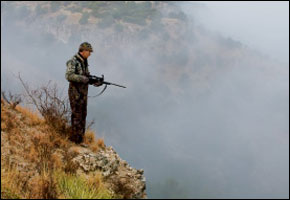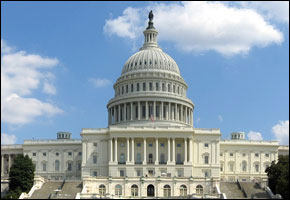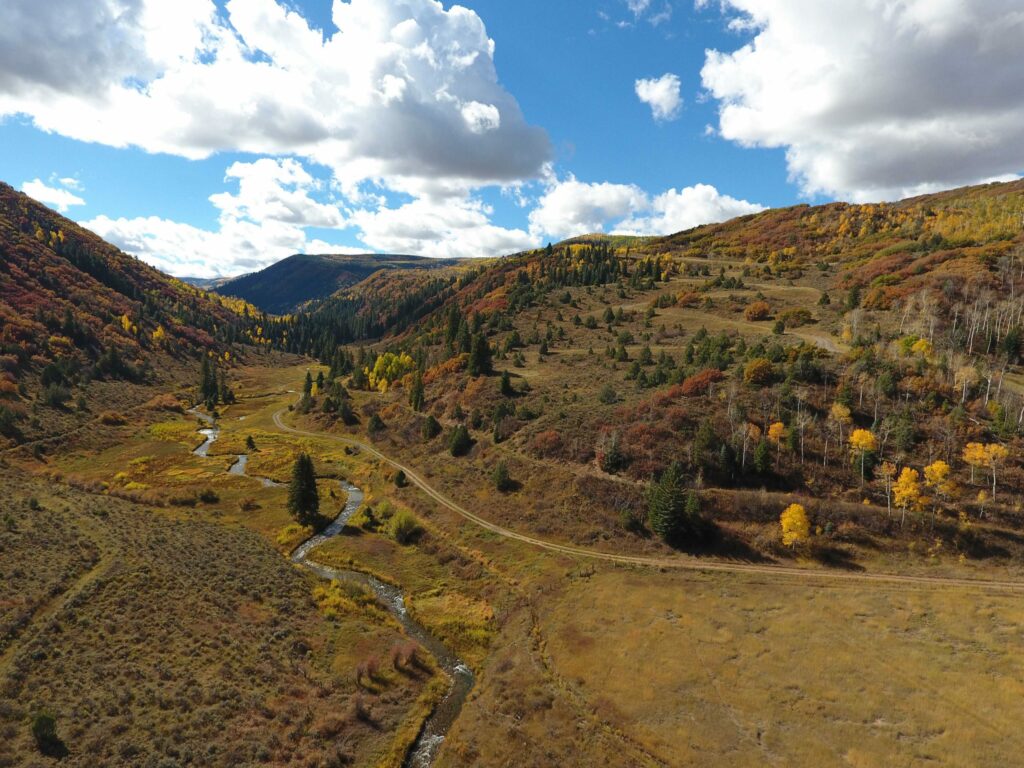 Over the last decade, there’s been a boom in rural land prices throughout much of the US and parts of Canada. I say this not because of some government report or a recently released study but based on firsthand experience. I live in Southern Iowa, and I have been buying rural land here since 1995. Back then I could little afford more than an old used pickup truck. Yet land was so cheap that I couldn’t say no.
Over the last decade, there’s been a boom in rural land prices throughout much of the US and parts of Canada. I say this not because of some government report or a recently released study but based on firsthand experience. I live in Southern Iowa, and I have been buying rural land here since 1995. Back then I could little afford more than an old used pickup truck. Yet land was so cheap that I couldn’t say no.
BY BILL WINKE
PUBLISHED NOVEMBER 2007
To me it’s easy to understand how such price appreciation could occur within an hour of an Atlanta or a Portland. But Southern Iowa? It’s just one of a dozen hot markets with seemingly little to offer buyers. What’s behind this boom? The answer is easy: hunters.
Hunters have proven that they are willing to drive the market in their quest to preserve a place that enables them to pursue their passion. In many cases, they’re doing it with capital gains they are protecting by using 1031 Exchanges. In some ways, there is a sense of urgency–buyers jockeying around to get the good stuff and stake a claim to the best possible piece of undeveloped land — before it is gone. Here’s what hunters are buying right now and how you can profit from it.
What Hunters Want
Forget about the vast expanses of tillable land. That’s a whole different ball game. Farmland prices are fueled by a completely different set of dynamics: corn ethanol, soy diesel, major multinationals, and commodity pricing. This article is not about agricultural land. What I’m going to focus on is the seemingly worthless recreational land that has very limited income potential. That’s what hunters buy. In some areas, the price of rough ground is now exceeding the price of tillable land for the first time in history.
Don’t believe me? A friend of mine just sold his hunting farm for $3,000 per acre about a month ago while the best pure tillable in this area sells for about $2,300 per acre tops. Areas like Pike County, Illinois, and Buffalo County, Wisconsin, see this regularly. It is most common in regions where the tillable land is mid-grade and the hunting lands are high-profile. That’s because the tillable is based on rate of return and the hunting ground is based on the desire to own it.
Factors To Consider
Not all rural land appeals to hunters. Primary considerations include proximity to like-minded neighbors or sanctuaries (the neighborhood), the composition of the land itself (how it lays), as well as size, access, and control. Possible improvements also factor heavily into a buyer’s decision. Income generation is typically a secondary consideration.
NEIGHBORHOOD
When analyzing hunting land, the neighborhood is the most important factor. It starts with the county. Focus on counties that border those with the highest-profile reputation. For example, some of the best whitetail hunting in America can be found in Houston County, Minnesota. You will generally find better values in neighboring Winona and Fillmore counties.
|
Buyer’s Checklist No. 2 No. 3 No. 4 No. 5 No. 6 |
Now you need to get down to the individual tract. A broker friend of mine likes to categorize neighborhoods two ways: civilized and uncivilized. Civilized neighborhoods are much more attractive. But more than simply looking at the orderliness of the neighboring landowners, it’s important to find out what these neighbors are doing to impact the species in question. This is the biggie. Like-minded management of the resource is the key. Here is how it works.
Game is a shared resource. Every kind of game has an upper limit harvest tolerance before the quality of the hunting begins to suffer. If the neighbors are hammering every deer that jumps the fence, for example, the subject property is not worth nearly as much to a prospective sportsman than one in a management-friendly neighborhood. Also, today’s hunters are much more stewardship-minded than hunters in the past. They want to be able to effect a change in the maturity of the animals they hunt, to be able to maintain numbers compatible with the habitat, and to improve the overall health of the game they hunt. This requires good neighbors. I would much rather own a marginal farm in a great neighborhood than a better-looking farm in a marginal neighborhood.
Proximity to public hunting land is almost always a negative. The only exception is when the public land is obviously hunted very lightly or when the subject property is very small and serves essentially as a jumping-off point for hunting public land.
LAY OF THE LAND
The land has to look good. Here’s an analogy. If a house looks ugly from the road, it’s not nearly as attractive to a buyer even if it is spacious and has the right number of bedrooms and bathrooms. In the same way, the most valuable hunting land looks good relative to local options. Generally, the most attractive land possesses certain features. First is a majority of habitat. I personally like 75 percent timber/cover and 25 percent tillable land or CRP (Conservation Reserve Program) land. It also features terrain relief with ridges and valleys to create an attractive three-dimensional effect that most recreational buyers favor.
Rough topography also has a hidden benefit to the buyer. Acreage in rural land is not determined based on surface area but instead on the projection of the boundary of the property onto a horizontal plane. In other words, the acre count is not a three-dimensional record; it is two-dimensional, even though the property itself is three-dimensional.
Rough land has more actual surface area per taxable acre than flat land. This is why a buyer may sense that a property feels larger than the actual acre count. Terrain is a very relevant factor when analyzing hunting land. The type of habitat on the land is also important, but it only becomes a factor at the extremes. For example, a beautiful stand of mature hardwood timber adds value both aesthetically and financially to the next buyer. Nasty timberland made up of hedge and locust may detract from the value of the land if comparable farms in the area have better-looking timber.
SIZE
The size of the property also matters relative to the ability to manage the resource. For example, in white-tailed deer country a piece of property has to approach 2,000 acres with a mix of at least 60 percent cover before you begin to control your own destiny. With any smaller property, the neighborhood has to be good to enjoy maximum management success.
Size is also important when considering how much hunting pressure a piece of land can sustain. With the right mix of cover and open areas for feeding (again, I favor a 75/25 split), a property that is only 160 acres can accommodate two hunters for an entire season. But if the land is more open, typically it needs to be larger to produce the same quality experience.
ACCESS
For the most part, properties with limited access are worth less than properties with full, convenient access. In many areas, minimum-maintenance dirt roads are common. When the only way in to a property is a dirt road, the property is less valuable. When it rains, those roads are all but impassible — a big negative.
Avoid landlocked parcels like the plague (those properties that don’t include some form of access such as a county road or an easement across a neighbor’s property) unless you really understand the laws of the state regarding this issue and are up for a potential court battle to gain access. It is much better to make your offer on the landlocked parcel contingent on your ability to buy an easement from a neighbor than to buy the landlocked parcel as is.
CONTROL
Nothing is more discouraging for a new landowner than the battle to keep trespassers out of the property. There are two big red flags to look for when determining the potential trespass situation. First, if the previous owners were local (not absentee) landowners, there is a good chance the problem will be minimal. Second, check out the attitude of neighboring landowners. Stop in and talk to a few potential neighbors just to get a feel. Do just what you least want to do: Knock on the door and make a cold call. The reception you get will speak volumes. Will they keep their friends out of your property?
If you have the time and ambition, you can sometimes remedy a bad trespassing problem by simply being on-site often and letting everyone know that the situation has changed. If you can’t make that commitment of time and don’t have someone who can make it for you, it is best to walk away.
IMPROVEMENTS
Unless the property is a high-profile, high-dollar piece of land, you don’t want to spend time and money adding a lodge or cabin. It is too risky. Let the next guy–the end-user–build exactly what he wants, exactly where he wants it. I have seen too many deals fall apart because the potential buyer didn’t really want to pay for an expensive piece of lodging.
Other improvements, however, are critical to maximizing your return. In general, the trail system through the property should be very clean and passable under the widest possible range of conditions. If it isn’t, spend the money to fix it. Boundary fencing is also important. Establish the line and put in any missing fences so the next guy knows exactly what he is buying and has a greater sense of confidence that the neighbors will respect his boundary.
Again, sticking with the whitetail-hunting theme, nice, clean fields are also important. Ideally they are located in secluded locations. The future hunter wants to be able to plant food plots in as close to a true farming manner as possible. That means that you may have to clear a few overgrown fields, smooth them out, and have them professionally planted. That is a big step toward making the property look good and bringing it closer to finished status. Cover is universal; trails and fields sell deer-hunting property.
What Are You Ultimately Selling?
If you are considering an investment in recreational land, would you be happy keeping the particular tract you are looking at? If not, it is probably not a good investment simply because the things that turn you off will likely turn off the next guy.
THE EXPERIENCE
With recreational land, you are not really buying and selling land. You are buying and selling an experience. Keep this in mind. What kind of experience will someone have when hunting the property you are analyzing? Trespassers, contentious neighbors, poor management prospects, fence disputes, poor access, ugly views–they are all big turn-offs.
The best recreational investments have a secluded, natural feel. Remember, the way the place feels–the experience it produces–is the glue that ties all the other factors together. If it doesn’t feel good, walk away. I like it when the hair on the back of my neck stands up when I’m looking at a property. I know I have a winner.
ELIMINATE RISK
Not all recreational land buyers are sophisticated investors. They may not be good at due diligence. The very thought of dropping their life savings on a piece of dirt has them nervous to begin with. On top of that, throw in a few unknowns and it becomes very hard for them to pull the trigger on a purchase. Eliminating risk for the next guy is an important aspect of recreational land investing. Don’t buy something if you have doubts that you can eventually guarantee the experience through your own hard work, diplomacy, or money spent.
Final Analysis
If a tract of recreational ground meets all the criteria I have set out, in all likelihood you’re looking at a BUY signal. Of course, you also need to hit reasonably close to market price. Unless you plan on solving some major problems related to a piece of property–a costly easement issue, for instance–don’t expect to come across deep discounts in well-established markets.
A solid property at, or slightly below, market price is a better investment for an absentee landowner than one fraught with trespassing problems and projects. But if you have time to police the property and take on projects (improvements), you can make a better return by purchasing a diamond in the rough. This approach is a bit riskier and it will take more time, but the potential return is definitely better.
WHAT IS A 1031 EXCHANGE?
And why is it one of the driving factors behind the boom in hunting land values?
When Bill Winke writes that investors are driving the market for hunting lands “with capital gains they are protecting by using 1031 Exchanges,” what is he referring to? The answer is quite simple: one of the most sophisticated tools available to savvy investors buying and selling real estate.Sell a stock at a profit, and what do you get? A bill from Uncle Sam for the tax on your capital gain. But sell that same stock for the very same profit in your 401(k), and what happens to your tax bill? Uncle Sam postpones it.
If you’re comfortable with this concept, then you have grasped the essence of a 1031 Exchange: a method to defer capital gains taxes on the sale of a property by investing the proceeds in like-kind property as detailed in Section 1031 of the Internal Revenue Code. Winke reports that he has already completed one 1031 Exchange this year and has plans in the works for two more.
“I spoke with a Realtor recently, and he said that at least one-third [of] his sales involve a 1031. People have money to move …” he says, and clearly they are moving it into hunting lands.Oddly enough, this doesn’t always mean they are reinvesting profits from one hunting property into another. All real estate in the United States is considered to be like-kind as long as each property qualifies for the proper use.
Mineral interests, a rent house, perpetual water rights, and hunting land can all be considered like-kind as long as they are being held for investment.These are just a few of the many specifics associated with a 1031 Exchange. Above all, remember these two words: Qualified Intermediary. This term applies to the independent party that actually facilitates the tax-deferred exchange. Anyone completing a 1031 Exchange relies on a Qualified Intermediary to explain the different types of exchanges — simultaneous, delayed, build-to-suit, reverse, and personal property — as well as the requirements for a valid exchange and the specific time restrictions involved.
Are you the sort that likes to save a buck and do your own taxes? That won’t work with a 1031 Exchange. The Qualified Intermediary acts as a safe harbor for the funds and protects the investor from taxable consequences. The instant a taxpayer receives the proceeds from the sale of a property–actual or constructive receipt as it is called–any notion of a 1031 Exchange evaporates. Using that earlier analogy of trading stocks, it is now a transaction done outside the protective shield of your 401(k).
If a 1031 Exchange sounds like it might make sense for you and your portfolio, a good place to start is the Federation of Exchange Accommodators (www.1031.org). This professional trade association is made up of Qualified Intermediaries from across the country. Depending on the amount of hand-holding required, a simple exchange could range from $500 to $1,000 per exchange (more elaborate transactions can cost many thousands more). Winke reports that he paid $800 on his last exchange, and in his words, it was well worth it. — Eric O’Keefe




